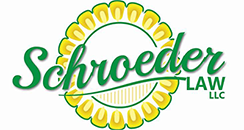Lee R. Schroeder is an Ohio licensed attorney at Schroeder Law LLC in Putnam County. He limits his practice to business, real estate, estate planning and agriculture issues in northwest Ohio. He can be reached at Lee@LeeSchroeder.com or at 419-659-2058. This article is not intended to serve as legal advice, and specific advice should be sought from the licensed attorney of your choice based upon the specific facts and circumstances that you face.
Many landlords and tenants could benefit from better farmland leases. Sometimes, the seemingly simple act of defining each party may be more complex than one assumes.
More complicated agreements such as “hybrid leases,” which contain elements of cash rent and crop-share, rely on formulating payments based on yield and crop prices. Other basic items such as lease duration or payment schedule could create pitfalls if both parties have not clearly established them. A good farmland lease will address these concerns, among others.
Many farm leases are year-to-year verbal leases, despite many potential pitfalls. A written farmland lease does not need to be lengthy or be prepared by an attorney. However, I have found that effective farmland leases include at least four components.
First, the landlord and the tenant should be defined. The landlord’s identity would seem self-evident. However, Ohio law allows one co-owner of land to enter into a lease that will bind all other co-owners. Further, if the current owner of the land owns the land through a life estate or under a life lease, the lease’s landlord should be defined to include the people who would own the land if the current owner dies before the lease terminates.
Read more about what makes a good farmland lease in Lee’s article for the Lima News, “Legal-Ease: Components of a good farmland lease.”
Source: LimaOhio.com, “Legal-Ease: Components of a good farmland lease,” by Lee. R. Schroeder, January 14, 2017.
